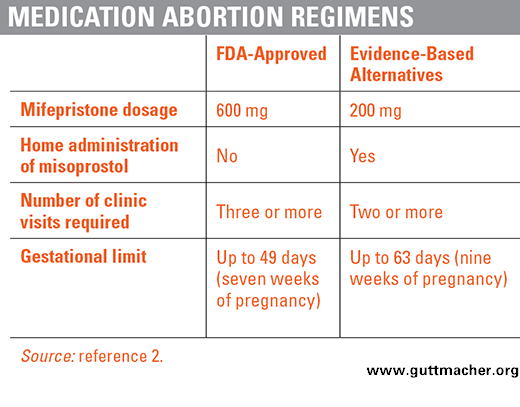No, Abortion Drugs Aren't Banned in Oklahoma
But the state has imposed strict new rules on who can take them and how.

An Oklahoma judge said Wednesday that he won't block a state law concerning the use of abortion-inducing drugs mifepristone and misoprostol. Several news outlets, including Reuters, reported that abortion pills would now be banned in the state, but this is not correct. Under the new law, mifepristone and misoprostol—together known as the "Mifeprex regimen"—are still permitted as long as doctors prescribe them according to Food and Drug Administration (FDA) protocol.

This is, in itself, no win from a reproductive freedom standpoint: the FDA-approved regimen includes more restrictions on who can take the drugs and how they do so than is currently accepted medical practice. The Guttmacher Institute calls it "an outdated regimen" that "prohibits alternative, evidence-based protocols in wide use for at least the past decade."
Under FDA protocol, which hasn't been updated since its approval in 2000, these medications can only be taken within seven weeks of the start of a woman's last period. Doctors and medical groups now say the drugs are safe and effective through the ninth week of pregnancy.
The FDA-approved Mifeprex regimen also stipulates that all drugs be taken in the presence of a physician. Since the regimen requires taking the pills three days apart, that means a woman will have to make a repeat (and unnecessary) visit back to a clinic merely to swallow a pill. In most places it's permissible to take the first pill at the clinic and the follow-up pill at home.
The third major difference between now-typical protocol and the FDA regimen is dosage: the FDA requires a 600 milligram dose of mifepristone, while 200 milligrams is sufficient and standard. So under Oklahoma's new law, women seeking non-surgical abortions will be required to take more of a drug than is necessary for its effectiveness.
Republicans in the Oklahoma legislature say all of this is to ensure women's safety.
In 2011, the legislature passed a somewhat similar law, only this one banned all off-label use of abortion-inducing drugs. Because misoprostol was initially approved and introduced as an ulcer medication, this would have prohibited its use in inducing abortion. Aside from mifepristone, there are no other abortion-inducing drugs currently approved in America, and mifepristone only works properly in conjunction with misoprostol. So the 2011 law would have essentially banned non-surgical abortion. It was found unconstituional by a district court and eventually the Oklahoma Supreme Court.
The new law—passed in April and scheduled to take effect November 1—"fixed the issues that the court had," said its author, Rep. Randy Graud (R-Oklahoma City).
District Court Judge Robert Stuart hasn't yet ruled on the merits of the law, but he indicated in court on Wednesday that he would deny a motion for temporary injunction brought by the Oklahoma Coalition for Reproductive Justice and Reproductive Services of Tulsa. However, he said he will temporarily suspend portions of the law that subject physicians to legal liability. As written, the law allows not only women but also maternal grandparents and "the father of the unborn child who was the subject of the abortion" (if they're married) to bring an action against physicians who perform an abortion "in knowing or reckless violation" of the law.

Show Comments (93)